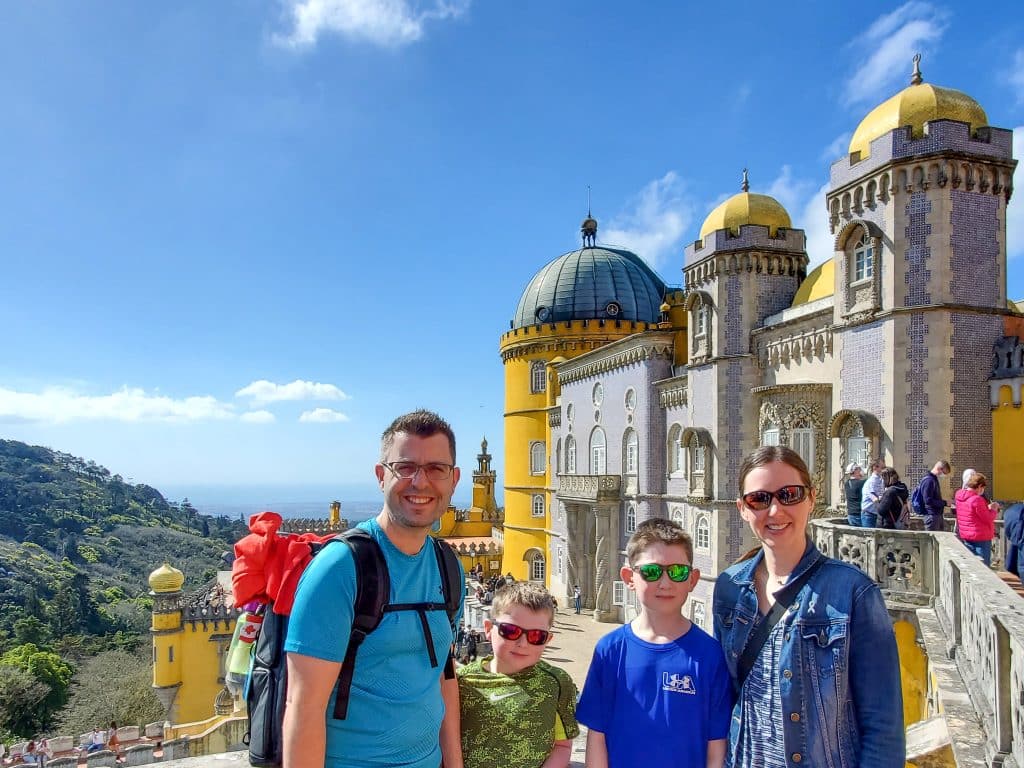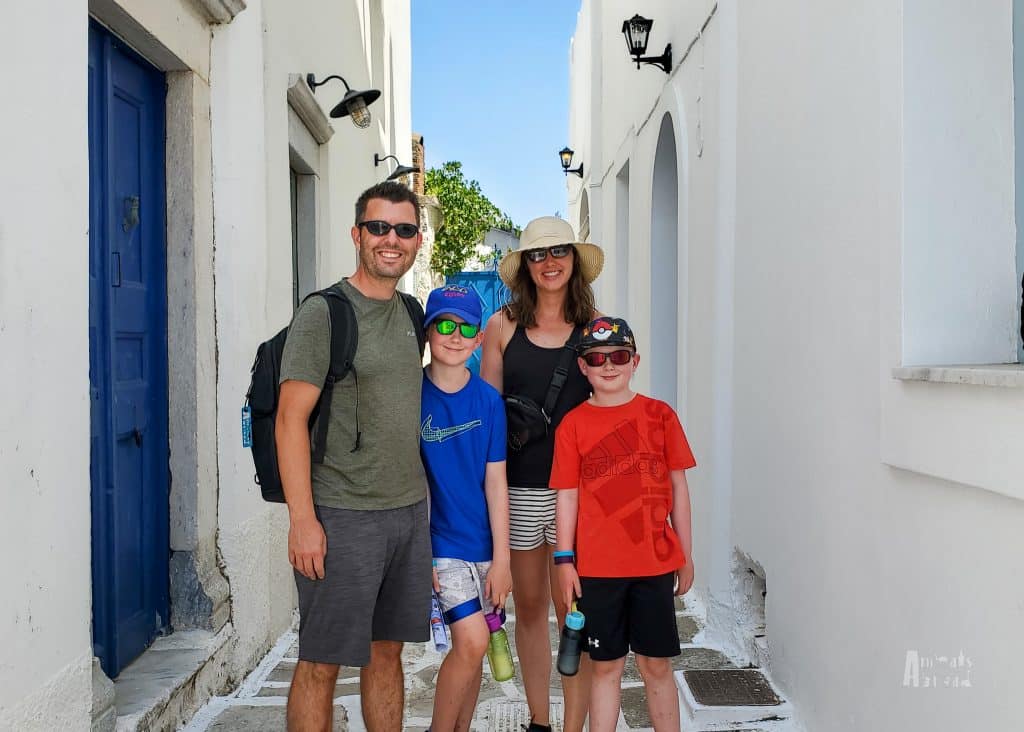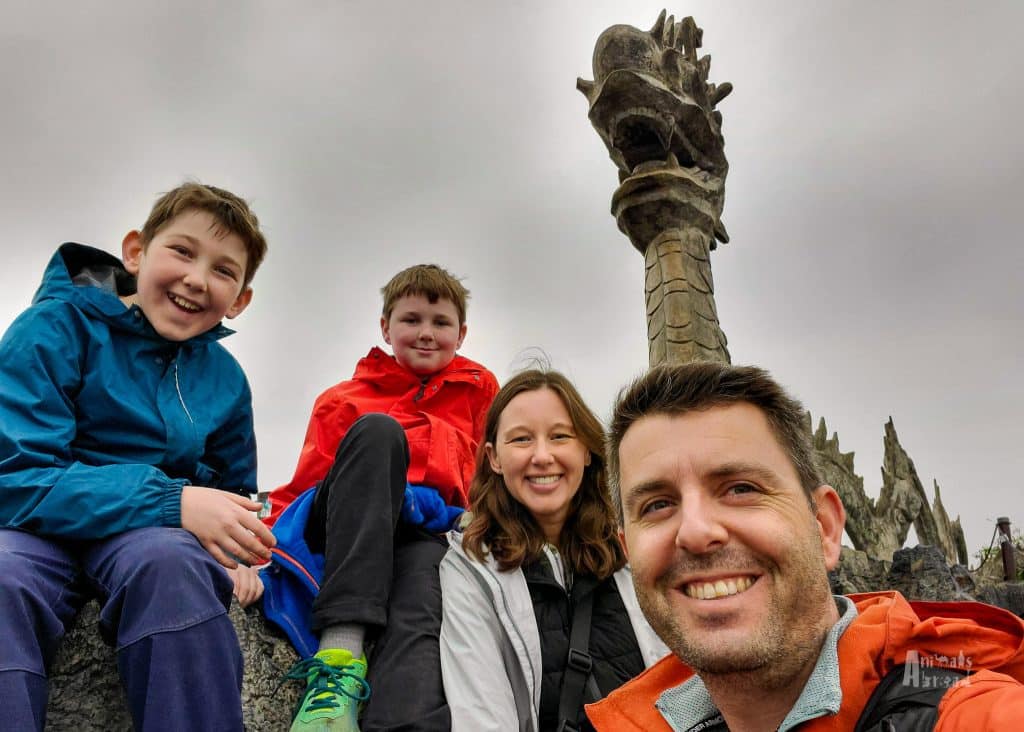Do you want to take a world trip, or do you want to keep doing that?
That was the question we asked ourselves over and over again for three years. “That” meant all the small things: the takeout dinners, the new clothes, the home renovations, the weekend getaways, the Amazon impulse buys. “This” was the dream of a world adventure with our kids.
Big dreams don’t happen by accident. They happen by choice—again and again.
If you’re dreaming of a long-term family trip around the world, the good news is that it is possible. But it takes planning, prioritizing, and yes, sacrifices. Here’s how we saved to make it happen, and how you can too.

Start with a Budget or Savings Goal
Before diving into saving, take time to consider your overall travel budget. On average, a world trip will cost around USD 25,000 per person per year. But depending on your situation, you may not need to save the entire amount upfront.
Ask yourself:
• Will you work while you’re away?
• Do you have passive income, such as rental properties, that you can draw from?
• Will you sell any assets before leaving?
Learn more about budgeting for a world trip in our post: How Much Does a World Trip Cost?
Working While Travelling
Working while you travel is a great way to reduce the amount you need to save before you go. If you can take your job on the road—or pick up work along the way—it’s possible to fund part of your trip as you go. However, it also means your trip might need to move at a slower pace—balancing long hours of work with sightseeing and family time can be tough. You may need to extend your travel timeline or adjust expectations for how much ground you’ll cover.
For us, working while travelling wasn’t feasible. Our jobs didn’t allow it, and more importantly, we didn’t want to. We wanted to be fully present. We chose to treat this trip as a once-in-a-lifetime opportunity to explore the world with our kids, to slow down, connect, and experience each place as a family.
So, we committed to saving what we needed ahead of time. It was a big decision, but one we never regretted.
What About Selling Assets?
One of the biggest financial decisions you might face when planning a world trip is whether or not to sell your home. For some families, selling a house or other big-ticket items can be the key to unlocking the funds needed to make long-term travel possible. But it’s a major decision with serious pros and cons, both financial and emotional.
In our case, the only major assets we sold were our cars. Selling our house was never an option—we knew we couldn’t afford to re-enter the market if we did. Instead, we rented out our home fully furnished (which saved us storage fees) at a rate that covered our mortgage. That gave us peace of mind and freed up our budget for the trip.
How We Saved for Our World Trip
It may seem like a monumental task, and honestly—it was. But it’s doable. Here are the five steps that helped us reach our savings goal.

Step 1: Review Your Expenses
Start by understanding exactly where your money is going. Break your spending into categories:
• Essentials: Mortgage or rent, car payments, insurance, utilities.
• Food: What you eat matters just as much as where you eat. Track groceries, takeout, restaurants, and those daily coffee runs.
• Household Expenses: Cleaning supplies, household items like towels and sheets, clothing, and maintenance.
• Entertainment: Subscriptions, gym memberships, kids’ activities, movies, vacations.
You may be surprised where your money is going—and how much of it you can redirect toward your travel fund.
Step 2: Identify Saving Opportunities
Once you’ve reviewed your expenses, ask the hard question: What can you live without?
This is where “This or That?” becomes real. Do you want that weekly takeout, or do you want a picnic overlooking the Eiffel Tower? The latest tablet, or snorkelling in the Galápagos?
Being honest about your priorities is key, and it’s different for everyone.
Step 3: Set a Monthly Saving Goal
Our target was CAD 200,000 over three years—about $5,555 monthly. That was ambitious, and we didn’t hit it every month.
With Derek working as a realtor, his income was variable. Some months were great; others were tight—especially during the early COVID lockdowns when realtors weren’t allowed to work. We saved what we could, when we could, and made up the difference in stronger months.
Consistency helped—but so did flexibility.

We also got the kids involved in the savings process. We helped our boys set a savings goal of CAD 1,000 over three years and used homemade colouring sheets to track their progress. When they reached a mini-milestone, say $50, they got to colour a picture. Watching their progress made them feel part of the journey, and it turned saving into something visual and fun.
Learn More: How to Involve Your Kids in Planning a World Trip
Step 4: Set Up a Dedicated Travel Account
We created a separate travel savings account to stay focused. We automated a $700 weekly transfer (just under $3,000/month), and once the money landed in that account, we didn’t touch it. Watching the balance grow was incredibly motivating. It made the goal feel real.
Step 5: Get Serious About Saving
There’s no way around it—saving for a world trip takes discipline. Some months it was tough. Saying no to dinners out, weekend getaways, or spontaneous outings wasn’t always easy, especially with kids. We watched others take vacations, update their homes, or sign their kids up for cool new activities, but we reminded ourselves why we were choosing not to and stuck to it for three years.
Here are some tough choices we made:
• Cutting back on dining out: Limited to once a week.
• No vacations or weekend getaways: Aside from a week of summer camping.
• Free or low-cost activities: We swapped movies, concerts, and amusement parks for local hikes, beach days, community pools, and family movie nights at home with homemade snack packs.
• No new household items or clothes (unless they were coming on the trip): By the time we left, many of our towels and sheets had holes, but we didn’t replace anything we could live without.
• Gifting with purpose: We used birthdays and holidays to buy (or ask for) travel gear or essentials we’d need on the road.
Sticking with this lifestyle for three years required focus and constant motivation. There were definitely moments of doubt and frustration, but we kept our eyes on the bigger picture: time together, adventure, and a once-in-a-lifetime chance to explore the world as a family.
Final Thoughts: This or That?

The road to our world trip wasn’t smooth or predictable. We didn’t save for it by being perfect—we did it by being persistent. We said no to many “thats” so we could say yes to this once-in-a-lifetime journey.
Some months were tough. Some choices weren’t fun. But every time we tracked our savings or dreamed together about the places we’d go, it felt worth it. We didn’t hit our savings target. In the end, we saved $180,000 instead of the $200,000 we aimed for. That meant shortening our trip a little, but the time away was exactly what we needed, returning home full of memories and gratitude.
If a world trip is your dream, you don’t need to win the lottery. You need a plan, a timeline, and the determination to ask yourself: Do I want this or that?
Ready to Get Started?
Check out these related posts to help plan your World Trip:
• Building a World Trip Itinerary
• How much does a World Trip cost?
• How to Involve Your Kids in Planning a World Trip

